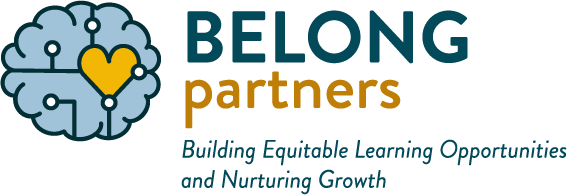
Young people missed foundational developmental milestones during COVID-19 school closures, resulting in less developed regulation skills in children and more big behaviors for educators to respond to. The good news is that recent brain science research helps us understand the physiology of strong emotions and how to teach skills to move through them.
In this video from Edutopia, Dr. Linda Darling-Hammond states, “If you can’t manage your feelings, it’s hard to open up your brain to be able to receive the content that you’re trying to learn.” Therefore, learning will be much harder to access if we don’t do the groundwork of self-regulation and co-regulation with our students. Creating a foundation of emotional regulation makes our work of imparting learning smoother and helps reduce challenging behaviors throughout the school day. Here are a few tips to weave emotional regulation into your classroom routine.
Modeling Naming Big Emotions
Educators and students can experience a wide range of emotions throughout the day, from joy to anger to frustration to stress to excitement. A key element in staying regulated is naming your emotions. In this article from 6seconds.org, brain scientists say it can release serotonin in our brains – even saying the emotion aloud can help calm us down.
Lindsey Minder, a teacher in Massachusetts, states in the Edutopia video that “naming my own emotions and modeling for the students how I can attach an emotional vocabulary word to how I’m feeling and articulating how I’m processing that is an authentic way for them to pick up that same skill set and to see that I, as their teacher, am a real human who is having real feelings during the day, but I’m also doing my best to handle them in a way that is safe, and kind and productive. So, they recognize that having big feelings is part of being human, and being able to name them and do something about them is the work we will do together.”
Redwood Elementary in Grants Pass, Oregon, had great success when they focused on helping children name their feelings. Learning about and naming their big feelings helped the students express their feelings to their teachers and show more empathy for their fellow students, and they even worked on naming feelings within their families outside of school.
Recognize the power of mirror neurons. Humans are hard-wired to mirror what we see. If we teachers are trying to problem solve with kids who have “flipped their lids,” we may become “flipped” ourselves. If we notice that the student’s lid is flipped and can practice our self-calming strategies, the student can co-regulate from our calm, which is their best chance to reconnect with their “thinking brain.”
Build Emotional Vocabulary: Books are great mediums to teach about emotions. Wonder aloud and discuss the feelings of characters in the books you read. Collect synonyms for our primary emotions of sad, mad, glad, and scared, which will inspire better writing and a more nuanced ability for students to name their feelings. The ability to name our emotions is proven to calm our brains.
Exercise Regulation muscles:
- Teach activities that help children to sustain and regain calmness.
- Practice them daily at regular intervals as well as when your classroom seems dysregulated.
- Remember to provide a variety of strategies which include some that are active: walking, rhythms, jumping, and cross-body movement, while others can be more meditative.
- Check out our self-regulation card pack – we’ve compiled 60 ideas in a handy format.
Self-regulation practices help teachers fight against high-stress levels, exclusionary discipline, and implicit bias and support students’ social/emotional development. Above all, have grace with yourself and your students as you practice emotional regulation as a classroom community.
